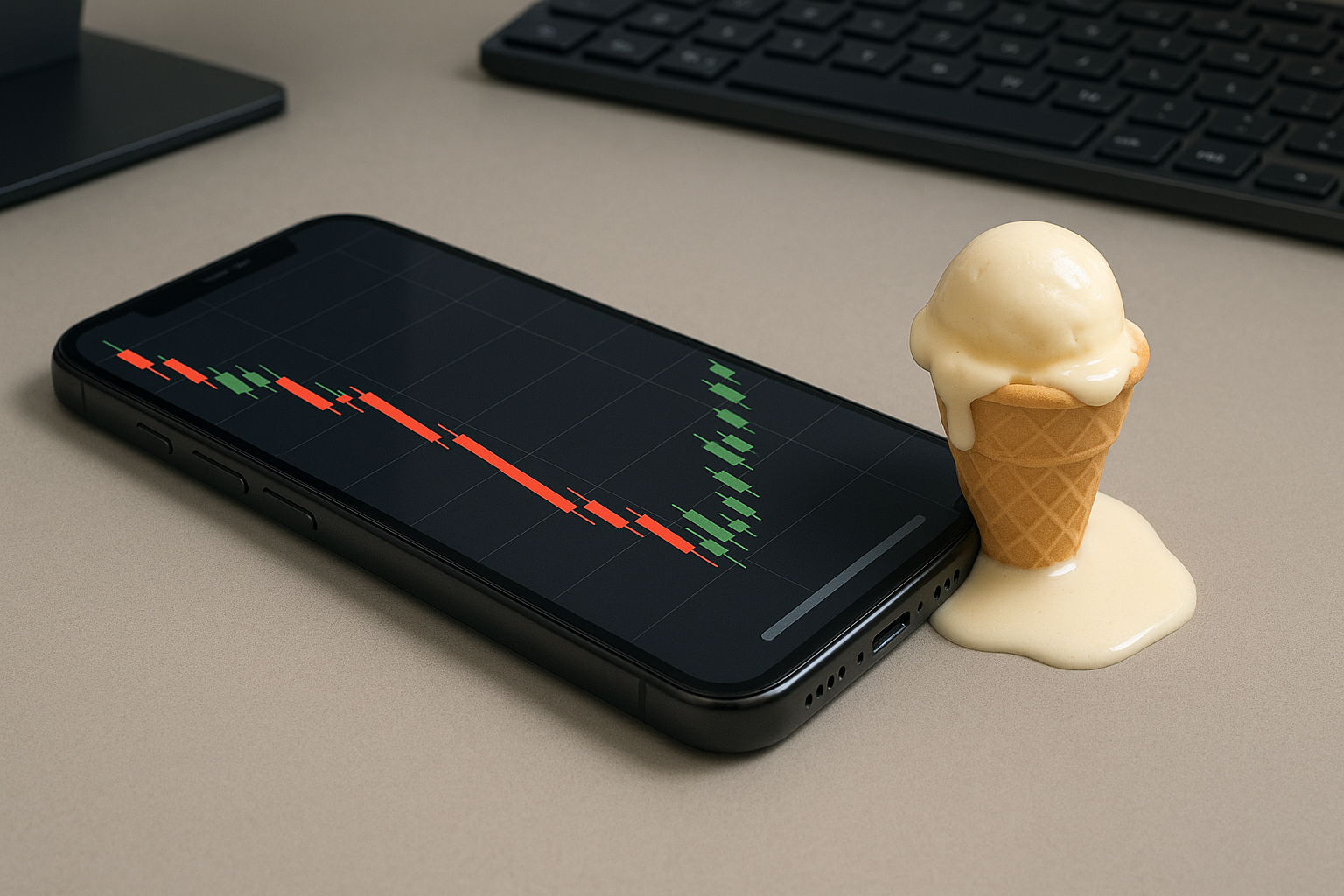The financial markets' Friday-to-Monday whiplash last week wasn't just dramatic—it was almost comically predictable.
One presidential tweet. A few hours of panic selling. A weekend to cool off. Then right back to the buying frenzy.
I've been watching this pattern repeat itself with increasing frequency, and I've got to ask: Is this what passes for market price discovery now? A 72-hour emotional cycle that begins with "political vomit" (not my phrase, but one I'm happily appropriating) and ends with what amounts to an ice cream bribe for a tantruming toddler?
Look, markets have always had mood swings. But there's something different—something deeply unsettling—about how quickly we now transition from fear to greed. Back when I started covering financial markets, a genuine correction took weeks to unfold and resolve. Now? We're done before most West Coast traders have finished their morning coffee.
The technical indicators tell the story better than I can. By Monday afternoon, I watched RSI readings on several major stocks push north of 90... even 95 in some cases. For the non-chart-obsessed among us, that's basically the market equivalent of a check engine light combined with smoke pouring from under the hood. These aren't signals of strength; they're flashing warnings of exhaustion.
But who cares about warning lights when stocks are going up?
(Many investors should, but that's a different article.)
The pattern suggests something I've suspected for a while: modern markets have developed an almost allergic reaction to discomfort. A healthy market should be able to sustain a pullback for more than the duration of a viral dance trend. Instead, every dip gets bought immediately—as though experiencing unrealized losses for longer than a weekend might cause physical pain.
"We've created a monster," one veteran trader told me, requesting anonymity because his firm doesn't authorize doom-and-gloom commentary. "The Fed has conditioned investors to expect immediate relief from any market stress. It's like raising kids who've never been told 'no.'"
That conditioning shows. Friday's selling wasn't a thoughtful reassessment of risk—it was a knee-jerk reaction to a tweet. And Monday's buying wasn't based on fundamental reanalysis—it was financial FOMO in its purest form.
Having covered three major market cycles, I can't help but notice what's missing from our current environment: patience. Healthy markets need time to digest information, reassess valuations, and yes, occasionally experience meaningful pullbacks. When's the last time we allowed that process to unfold naturally?
There's an argument, of course, that markets are simply more efficient now—that information gets priced in faster thanks to technology and accessibility. Maybe that's partly true. But efficiency doesn't explain the emotional whipsawing we're witnessing.
The irony? By refusing small, controlled doses of market pain, we're likely setting ourselves up for something far worse down the road.
I'm not suggesting we need artificial doom and gloom. But there's a massive difference between "stocks only go up" and allowing the occasional 5-7% pullback to, you know... actually pull back.
What worries me most isn't Friday's selling or Monday's buying—it's the frantic pace of the transition. If markets are supposed to be ongoing conversations about value, we've devolved from thoughtful dialogue into hyper-caffeinated text messages typed with our thumbs.
Sometimes I wonder if we'd all be better off if financial markets could sit with discomfort for more than an Instagram story's lifespan.
A market that can't tolerate therapeutic pain isn't showing resilience—it's showcasing dependency.
And that might be the most concerning indicator of all.
